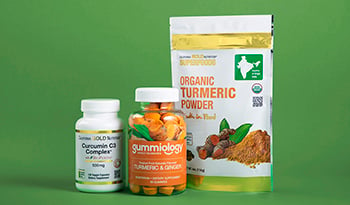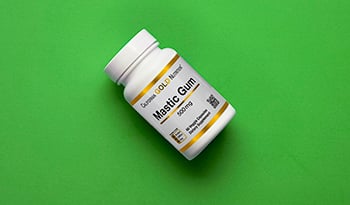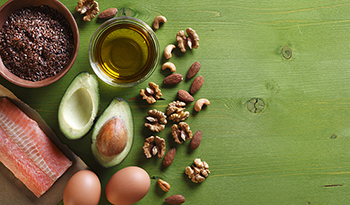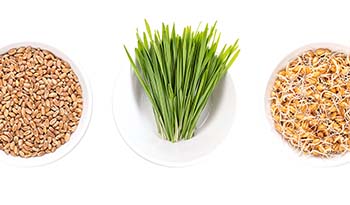Niacinamid: B3-vitaminhiány, bőr előnyei, táplálékforrások és egyebek
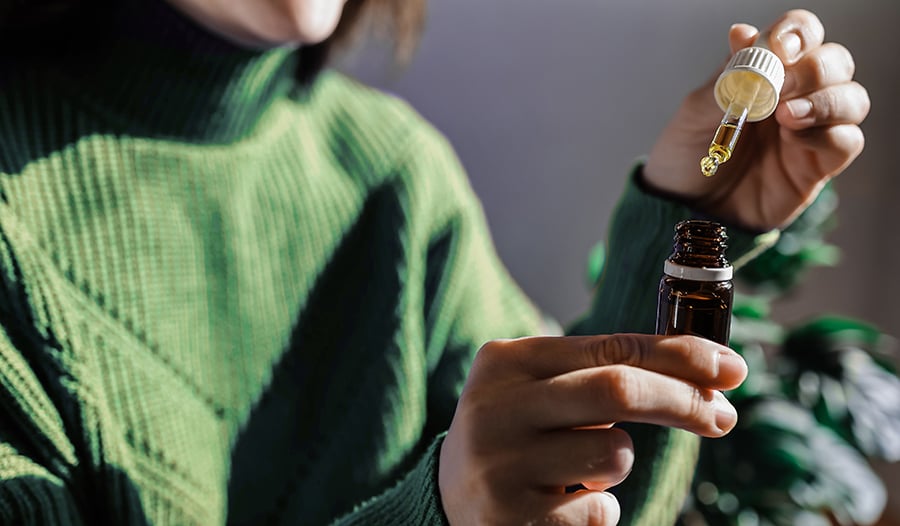
A niacinamid egyre népszerűbb azok számára, akik optimalizálni akarják egészségüket és jólétüket, mind belül, mind kívülről. Tanulmányok azt sugallják, hogy ennek a vitaminnak, amely a B-vitaminok csoportjába tartozik, elég sokoldalú és jótékony hatással van az egészségre. Mi pontosan a niacinamid, és mire használják?
Mi az a niacinamid?
A niacinamid, más néven nikotinamid, a vízben oldódó B3-vitamin vagy niacin egyik formája.
Mit csinál a B-vitamin (niacin)?
A niacin egy vitamin, amelyet a szervezet használ az anyagcsere, az emésztés, a bőr egészségének és az idegrendszer optimális működéséhez. A niacin lenyelés után nikotinamid adenin-dinukleotiddá (NAD) metabolizálódik.
Mi az a NAD?
NAD egy koenzim. A koenzim egy vitamin, ásványi anyag vagy nem fehérje tápanyag, amely az enzim megfelelő működéséhez szükséges.
NAD szükséges több mint 400 különböző enzim megfelelő működéséhez. A NAD néhány funkciója közé tartozik az élelmiszerek a test által felhasználható energiává alakítása, az anyagcsere elősegítése, a dezoxiribonukleinsav (DNS) helyreállítása, sőt az egészséges immunfunkció elősegítése.
NAD támogató szerepet is játszhat abban, hogy a sejtek öregedését tapasztalják.
Míg a niacinamidot gyakran használják B3-vitamin-kiegészítőként a B3-vitamin hiány kezelésére vagy megelőzésére, a bőr egészségének elősegítésére szolgáló kozmetikai készítményekben is alkalmazható.
Kutatások azt sugallják, hogy a niacinamidnak számos egészségügyi előnye van a B3-vitamin-hiány kezelésén túl, kezdve az egészséges koleszterinszint támogatásától és a cukorbetegség megelőzésétől a ragyogó bőrig.
Niacinamid B3-vitaminhiány esetén
A niacinamid egyik fő előnye és felhasználása a B3-vitaminhiány megelőzése vagy kezelése.
A B3-vitamin-hiány, más néven pellagra, akkor fordul elő, amikor az egyén nem kap elegendő niacint étrendjében, vagy problémái vannak a vitamin felszívódásával. A pellagra gyakran olyan személyeknél fordul elő, akik alultápláltságban vagy krónikus alkoholizmusban szenvednek.
A B3-vitamin-hiány akkor is előfordulhat, ha nincs elegendő triptofánbevitel az étrendben. A triptofán egy aminosav, amely számos élelmiszerben található, amelyet a szervezetben a niacin-termelés előfutáraként használnak.
A B3-vitamin-hiány tünetei
A B3-vitaminhiány vagy a pellagra jelei és tünetei közé tartozik a mentális zavartság, a gyomor-bélrendszeri tünetek, például hasmenés és fájdalom a hasban, rossz étvágy, valamint pikkelyes gyulladt bőr és nyálkahártyák. Kezelés nélkül a pellagra halálos lehet. A niacinamidot gyakran használják pellagra kezelésére. Az Egészségügyi Világszervezet (WHO) napi 300 mg niacinamidot javasol 3-4 hétig pellagra kezelésére.
Niacinamid bőr előnyei
A niacinamid egyik legszélesebb körben vizsgált felhasználása a bőr egészségére vonatkozik, mind helyi, mind orális alkalmazással. A kutatások azt mutatják, hogy a niacinamid segíthet a bőr textúrájának, megjelenésének és általános minőségének javításában.
1. Védje az UV sugarak ellen
Az egyik módja annak, hogy a niacinamid hozzájárulhat a bőr minőségének javításához, az, hogy segít megvédeni a bőrt az ultraibolya (UV) sugárzás hatásaitól. Az UV sugárzás egyfajta energia, amelyet a nap és bizonyos ember alkotta források, például szoláriumok bocsátanak ki. Az UV-sugárzást „teljes rákkeltő” kategóriába sorolták, mert nemcsak a DNS mutációját okozza a bőrben, hanem károsítja a bőrsejteket is, ami bőrrákhoz vezethet.
Tanulmányok azt mutatják, hogy mind az orális, mind a helyi niacinamid-kiegészítés segíthet az UV bőrkárosodás elleni védelemben. Egy tanulmány azt is megállapította, hogy a helyi niacinamid használata, valamint a kiegészítés segített csökkenteni az UV által kiváltott immunrendszer elnyomását, miközben csökkentette a bőrrák kockázatát.
2. Csökkentse az aktinikus keratózist
Tanulmányok azt sugallják, hogy a niacinamid segíthet az aktinikus keratózis csökkentésében is. Az aktinikus keratózis (egynél több elváltozás keratózisa) a túlzott UV-sugárzás által okozott bőrbetegség. Az aktinikus keratózist száraz, pikkelyes, durva bőrfoltok jellemzik, amelyek rózsaszínűek vagy barna színűek lehetnek. Ezek a bőrelváltozások viszketőek is lehetnek, vagy égő fájdalmat okozhatnak. Vérözhetnek is. Az aktinikus keratózis laphámsejtes karcinómává, rosszindulatú bőrrákká alakulhat ki.
Egy kettős vak, randomizált, placebo-kontrollos vizsgálat 72 olyan személyt követett, akiknél legalább 4 aktinikus keratózis elváltozást diagnosztizáltak. A résztvevőket vagy egy niacinamidot kapó csoportba, vagy placebo csoportba helyezték. A 4 hónapos nyomon követés során a tanulmány megállapította, hogy azoknál, akik niacinamid-kiegészítőt szedtek, szignifikánsan alacsonyabb volt az új aktiniás keratózis elváltozások kialakulása, mint a placebo csoportba tartozókhoz képest.
3. Javítsa a bőr általános megjelenését
Kutatások azt is sugallják, hogy a niacinamid segíthet a bőr általános megjelenésének javításában is. Egy 50 nőstény részvételével, akiknek finom vonalai, sötét pigmentációs foltok az arcon, egyenetlen bőr textúrája és ráncok voltak, követték azokat a résztvevőket, akik 12 hétig niacinamidot tartalmazó termék helyi készítményét használták. A résztvevők csak az arc egyik felére alkalmazták a helyi niacinamid készítményt, míg a másik felére placebo krémet alkalmaztak.
12 hét elteltével a tanulmány megállapította, hogy a niacinamid készítményt kapó arc felének jelentősen csökkent a finom vonalak és a sötét bőrfoltok. A niacinamid készítményt kapott bőr rugalmassága is jelentősen javult a placebóhoz képest.
A niacinamid táplálékforrásai
Mivel a niacinamid természetben előforduló anyag, számos különböző élelmiszerben megtalálható. A niacinamid egyik legjobb táplálékforrása a triptofán aminosavban található.
A triptofán megtalálható olyan élelmiszerekben, mint a csirke, tonhal, pulyka, földimogyoró, zab, banán és csokoládé. Lenyelés után a triptofán természetesen niacinamidvá alakul a májban. Ehhez a folyamathoz B6-vitamin, vas és B2-vitamin vagy riboflavin szükséges az optimális átalakuláshoz.
Míg a niacinamid a májban előállítható triptofánból, sok élelmiszer természetesen tartalmazza magát a vitamint. A niacin és a niacinamid számos élelmiszercsoportban megtalálható, beleértve a húsokat, dióféléket és magokat, tejtermékeket, gabonaféléket, valamint gyümölcsöket és zöldségeket. A magas niacintartalmú élelmiszerek listája a következőket tartalmazza. A felsorolt niacin mennyisége adagonként vonatkozik.
Húsok
- Marhamáj 14,9 milligramm (mg)
- Sertéshús 6,3 mg
- Tonhal 8,6 mg
- Lazac 8,6 mg
- Pulykamell 10 mg
- Csirkemell 10,3 mg
Diófélék és magvak
- Napraforgómag 2 mg
- Tökmag 1,3 mg
- Kesudió 0,4 mg
Tejtermékek
- 1% tej 0,2 mg
- Sima alacsony zsírtartalmú joghurt 0,3 mg
Gabonafélék
- Teljes kiőrlésű kenyér 1,4 mg
- Bulgária 0,9 mg
- Barna rizs 5,2 mg
Gyümölcsök és zöldségek
- Banán 0,8 mg
- 1/2 csésze mazsola 0,6 mg
- Brokkoli 0,4 mg
- Paradicsom 0,5 mg
Mivel a niacin különböző élelmiszerekben megtalálható, a változatos étrend elősegíti az optimális B3-vitamin bevitelét.
Niacinamid vs. Niacin kiegészítők
Amikor az orális kiegészítésről van szó, a niacinamidot gyakran előnyben részesítik a niacinnal szemben. Ennek oka az, hogy a nagyobb dózisú niacin bőrpírot, viszketést és melegérzetet okozhat a bőrön. Ezt a kényelmetlen állapotot öblítésnek nevezik, és akár egy óráig is tarthat.
Mivel a niacinamid nem okoz kipirulást, ugyanúgy vehető be, mint a niacin, anélkül, hogy kellemetlenséget okozna. Míg a niacinamid kezelheti a pellagrát, más egészségügyi előnyei is vannak, amelyek a cukorbetegség támogatásától és a koleszterinszint csökkentésétől a bőr egészségének javításáig terjednek.
Elvitelre
A niacinamid a B3-vitamin természetben előforduló és sokoldalú formája. Ez a kivételesen sokoldalú vitamin arról ismert, hogy képes elősegíteni az egészséget és a jólétet különféle testrendszerekben, kezdve az anyagcsere egészségétől a bőr egészségéig.
Függetlenül attól, hogy a cél a bőr ragyogó vagy az egészséges koleszterinszint, a niacinamid hozzáadása egy átfogó wellness rutinba segíthet az optimális egészség elősegítésében az elkövetkező években.
Referenciák:
- Boo YC. Mechanikus alapok és klinikai bizonyítékok a nikotinamid (niacinamid) alkalmazására a bőr öregedésének és pigmentációjának szabályozására. Antioxidánsok (Bázel). 2021; 10 (8) :1315. Közzétéve: 2021. augusztus 21. doi:10.3390/antiox10081315
- Çatak J. A niacin profilok meghatározása egyes állati és növényi alapú élelmiszerekben nagy teljesítményű folyadékkromatográfiával: összefüggés az egészséges táplálkozáshoz. J Anim Tudományos Technikai. 2019; 61 (3) :138-146. doi:10.5187/jast.2019.61.3.138
- Cheng SC, Young DO, Huang Y, Delmez JA, Coyne DW. Randomizált, kettős vak, placebo-kontrollos vizsgálat niacinamiddal a foszfor csökkentésére hemodialízisben szenvedő betegeknél. Clin J Am Soc Nephrol. 2008; 3 (4) :1131-1138. doi:10.2215/CJN.04211007
- Ki Y, Sauve AA. A nikotinamid ribozid, az élelmiszerekben található nyomtápanyag, egy B3-vitamin, amely hatással van az energia-anyagcserére és a neuroprotekcióra. Curr Opin Clin Nutr Metab Care. 2013; 16 (6) :657-661. doi:10.1097/mco.0b013e32836510c0
- Covarrubias AJ, Perrone R, Grozio A, Verdin E. NAD+ anyagcseréje és szerepe a sejtfolyamatokban az öregedés során. Nat Rev Mol Cell Biol. 2021; 22 (2): 119-141. doi: 10.1038/s41580-020-00313-x
- D'Orazio J, Jarrett S, Amaro-Ortiz A, Scott T. UV sugárzás és a bőr. Int J Mol Sci. 2013; 14 (6): 12222-12248. Közzétéve: 2013. június 7. doi:10.3390/ijms140612222
- Gehring W. Nikotinsav/niacinamid és a bőr. J Cosmet Dermatol. 2004; 3 (2) :88-93. doi:10.1111/j.1473-2130.2004.00115.x
- Madaan P, Sikka P, Malik DS. A niacinamid kozmeceutikai alkalmasságai: áttekintés. Legfrissebb Adv Antiinfective Drug Discov. 2021; 16 (3): 196-208. doi: 10.2174/2772434416666211129105629
- Mainville L, Smilga USA, Fortin PR. A nikotinamid hatása a bőrrákban és az aktinikus keratózisokban Kemoprofilaxis, valamint a nikotinamidhoz kapcsolódó káros hatások: szisztematikus áttekintés és metaanalízis. J Cutan Med Surg. 2022; 26 (3) :297-308. doi:10.1177/12034754221078201
- Méndez-Lara KA, Letelier N, Farré N, Diarte-Añazco EMG, Nieto-Nicolau N, Rodríguez-Millán E, Santos D, Pallarès V, Escolà-Gil JC, Vázquez del Olmo T, Lerma E, Camacho M, Casaroli-Marano RP, Valledor AF, Blanco-Vaca F, Julve J. Apolipoprotein B-tartalmú lipoprotein oxidáció, gyulladás és érelmeszesedés apolipoprotein E-hiányos egerekben. Antioxidánsok. 2020; 9 (11) :1162. https://doi.org/10.3390/antiox9111162
- Hercegnő ZW. Pellagra és megelőzése és ellenőrzése súlyos vészhelyzetek esetén. Egészségügyi Világszervezet. 2000.
- Rolfe HM. A nikotinamid áttekintése: bőrbetegségek és lehetséges mellékhatások kezelése. J Cosmet Dermatol. 2014; 13 (4) :324-328. doi:10.1111/jocd.12119
- Snaidr VA, Damian DL, Halliday GM. Nikotinamid fotoprotekcióhoz és bőrrák kemomegelőzéséhez: A hatékonyság és a biztonság áttekintése. Exp Dermatol. 2019; 28 Suppl 1:15-22. doi:10.1111/exd.13819 (MOA rákvédelem)
- Wohlrab J, Kreft D. Niacinamid - hatásmechanizmusok és helyi alkalmazása bőrgyógyászatban. Skin Pharmacol Physiol. 2014; 27 (6) :311-315. doi:10.1159/000359974
- Yilmaz Z, Piracha F, Anderson L, Mazzola N. Diabetes Mellitus-kiegészítők: Az irodalom áttekintése. J Pharm Pract. 2017; 30 (6) :631-638. doi:10.1177/0897190016663070
- Zhong, O., Wang, J., Tan, Y. és mtsai. A NAD+prekurzor-kiegészítés hatása az emberek glükóz- és lipidanyagcseréjére: metaanalízis. Nutr Metab (Lond) 19, 20 (2022). https://doi.org/10.1186/s12986-022-00653-9
FELELŐSSÉGKIZÁRÓ NYILATKOZAT:A jelen blognak nem célja diagnózis felállítása...














































































 Tartalomjegyzék
Tartalomjegyzék



